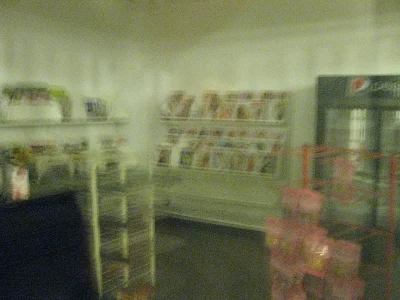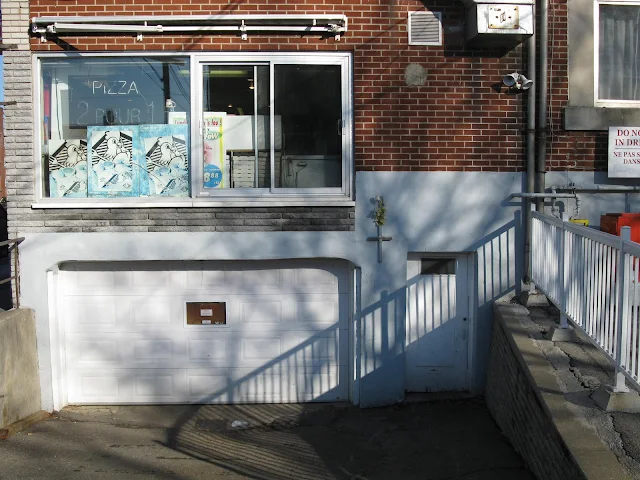Friday, April 29, 2011
Jean Cocteau on Poetry
----------------------------------------------
One cannot translate a real poet; not because his style is musical, but because his thought has a plastic quality, and, if this changes, the thought changes.
A Russian said to me: ‘The style of Orphée is musical in the opposite way to what the public calls musical. In spite of its lack of music, it is musical because it leaves the spirit free to profit from it as it wishes.
*
A poet, unless he is a politician (such as Hugo, Shelley or Byron), must only count on readers who know his language, the spirit of his language and the soul of his language.
* *
What of a poet or a dramatist endowed with the Indian fakir’s power of mass-hypnosis? Why do you boast then about not being in the realm of illusion and of seeing the trick behind the curtain? It is a case of people making fun of genius because they cannot be touched by it. That is the whole difference between us and the camera with its coweye. Many minds are confused between being touched and being victimized, admiring and being the dupe. They brace themselves against hypnosis. It is easy, alas! because the poet uses his fluid indirectly and possesses only the feeblest means of persuasion.
A museum is only justified to the extent that it bears witness to ancient activities, and keeps what remains of the phosphorescence around works, the fluid that emanates from them, and thanks to which they succeed in overcoming death.
* * *
Once a poet wakes up, he is stupid, I mean intelligent. “Where am I?”, he asks, like ladies who have fainted. Notes written by a poet who is awake are not worth much. I offer them only for what they are worth, at my own risk. One more experience.
* * * *
The inexplicable importance of poetry. Poetry considered as algebra.
First of all, poetry only solicits the toughest minds, minds which should scorn it as a luxury; the worst of all.
If it were proved to me that I would condemn myself to death if I did not burn “L’Ange Heurtebise,” [A poem which Cocteau first published in 1925. (Tr.)] I would perhaps burn it.
If it were proved to me that I would condemn myself to death if I did not add to or take away one syllable from the poem, I could not change it, I would refuse, I would die.
When I see all the artists who used to make a practise of despising the fashionable world because they had not as yet been received into it, lapse into snobbishness after the age of forty, I congratulate myself on having had the possibility of going into the fashionable world at sixteen and on having had enough of it by the time I was twenty-five.
* * * * *
Legend gathers round poets who live in glass houses. If they hide and live in some unknown cellar, the public thinks: “You’re hiding, you want us to believe there is something where there is nothing.”
On the other hand, if they look at the glass house, the public thinks: Your over simple gestures conceal something. You are deceiving us, you are mystifying us; and everyone begins to guess, distort, interpret, search, find, symbolise, and mystify.
People who come close to me and fathom the mystery, pity me and become angry; they do not know the advantages of a ridiculous legend: when they throw me to the flames they burn a lay figure who is not even like me. A bad reputation should be maintained with more love and more luxury than a little dancer.
In this way, I can explain the fine phrase that Max Jacob wrote to me: One should not be known for what one does.
Fame in one’s lifetime should only be used for one thing: to allow our work, after our death, to start out with a name.
* * * * * *
I wonder how people can write the lives of poets since the poets themselves could not write their own life. There are too many mysteries, too many true falsehoods, too many complications.
What can be said of the passionate friendships which must be confused with love, and yet nevertheless are something else, of the limits of love and friendship, of this region of the heart in which unknown senses participate, which cannot be understood by those who live standard lives?
Dates overlap, years mingle together. The snow melts, the feet fly away; no footprints remain.
Wednesday, April 27, 2011
Thursday, April 21, 2011
This life we live
for others, with our sense of humour; with the drama of our existence, with insight into the complexity of existence. In this narrative there is character development, a protagonist, an antagonist, a foil, and psychological and spiritual depth found in symbol, archetype, imagery, setting and foreshadowing, as well as in ambiguity, irony and paradox. No wonder people love a good narrative, a good story, even a good myth; it is at the basis of existence.
Margaret Laurence writes in her novel, A Jest of God, that the more narrowly self-conscious we are the less connected we are to other people. The jest of God is just this: to be consumed with our own ego denies us an awareness of the unself-conscious beauty of life in which there is connection to other people. Rachel Cameron, the protagonist of Laurence's novel, realizes that "to be wise you must be a fool first." She learns to live with contradiction and ambiguity, and to accept the anxiety that comes with this awareness. She affirms life, she does not retreat into the past but says "yes" to new experiences and an unknown future that awaits her.
Over the years, we move relentlessly to the resolution of life's drama which is the narrative of our existence. At the end, when we die, it would be good if we could say that it's been an exciting life, a life worth living, a life in which we have fulfilled our potential and our destiny.
Wednesday, April 20, 2011
Biography of Father Luke Callaghan
Father Luke Callaghan
Father Luke Callaghan was considerably younger than his two older brothers (Fr. Martin and Fr. James) who served as priests. He was born on 2 February 1865 in Montreal. He studied at the College de Montreal from 1877-1884, and then at the Grand Seminaire to 1889 where he studied philosophy and theology. After having been ordained he was chaplain at L'Hotel Dieu Hospital and the Royal Victoria Hospital. In 1895 he left for Rome where he earned a doctorate in theology from Urban University. In 1898 he was assistant Chancellor at the Archbishop's Palace which is situated on De La Gauchetiere and he resided at 873 De La Gauchetiere. In 1903 he served at St. Patrick's, under his brother Father Martin Callaghan. Father Luke remained at St. Patrick's until at least 1907, when he returned to Rome to continue his studies. In September 1904, Father Luke had the honour of delivering the first sermon ever given in English at Notre Dame Basilica.
In 1907 he returned to his position as Vice Chancellor at the Archbishop's Palace, residing at 471 De La Gauchetiere West.
From 1910-1931 Father Luke was the parish priest at St. Michael's Church and lived at 1634 St. Denis. Money for the building of St. Michael's Church was raised by Father Luke and came largely from Irish parishoners who moved from Griffintown to this area of Montreal, the area of St. Viateur Street, St. Denis Street, and Clarke Street. Father Luke proved to be both an excellent administrator and beloved priest. A landmark in Montreal, the impressive St. Michael's is constructed in the Byzantine style of architecture, modelled on the Basilica of Saint Sophia in Constantinople. Father Luke Callaghan died 12 April 1931 at the age of sixty-three years.
Sunday, April 17, 2011
A store at Alexis Nihon Plaza
The ghost of stores past... This former magazine store at Alexis Nihon Plaza, located across from the Bank of Montreal, closed last fall 2010; curiously, some merchandise was left behind... a kind of time capsule, frozen in space and time, the past, as it was left behind, as people left it when they walked away...
Friday, April 15, 2011
Thursday, April 14, 2011
Monday, April 11, 2011
Thursday, April 7, 2011
Sunday, April 3, 2011
A walk in NDG (six)
Friday, April 1, 2011
Thursday, March 31, 2011
A walk in NDG (five)
Here we are on the Loyola Campus of Concordia University, a statue of Mary near the Psychology Department.
Wednesday, March 30, 2011
Review of James Hollis's On this Journey ...
On This Journey We Call Our Life: Living the Questions,
Review by Stephen Morrissey
Other than saying that psyche is the totality of who we are—blood, brain, viscera, history, spirit and soul—we cannot limit its meaning. Note that psyche comes from two etymological roots: that of breathing, suggestive of the invisible life force which enters at birth and departs at death; and that of the butterfly, suggesting a teleologically driven process of evolution and transformation, which in the end is both beautiful and elusive... While we may be tempted to romanticize psyche as the place of sweet dreams, it is also the source of devouring energies, self-destruction and demonic drives.
Tuesday, March 29, 2011
My drive home from work in March 2011(five)
 |
| Departure... |
 |
| On the Champlain Bridge... |
 |
| On the Decarie Expressway... |
 |
| Downtown Montreal in the distance... |
 |
| My exit... |
 |
| Getting off at the Sherbrooke Street exit, then west on Sherbrooke and home... |
Saturday, March 26, 2011
Lost, found, missing... (four)
Looking at these posters for lost, sometimes found, sometimes still missing pets--and occasionally missing people--the images taken in happier days become images of sadness, grief, and loneliness. A new context for presenting the image, in a poster, changes the meaning of the image from one of love and happiness to a context of loss.
We transform our pets into surrogate children, surrogate partners--we place a human burden on them--and yet, obviously, we don't value them as much as we value humans, there are few, or no posters for lost children. There is a poignancy to the images. As the image ages, it becomes damaged by water, faded by sunlight, and hope of finding the lost pet is diminished. The pet stares back at us, lost, sometimes found, missing.













































